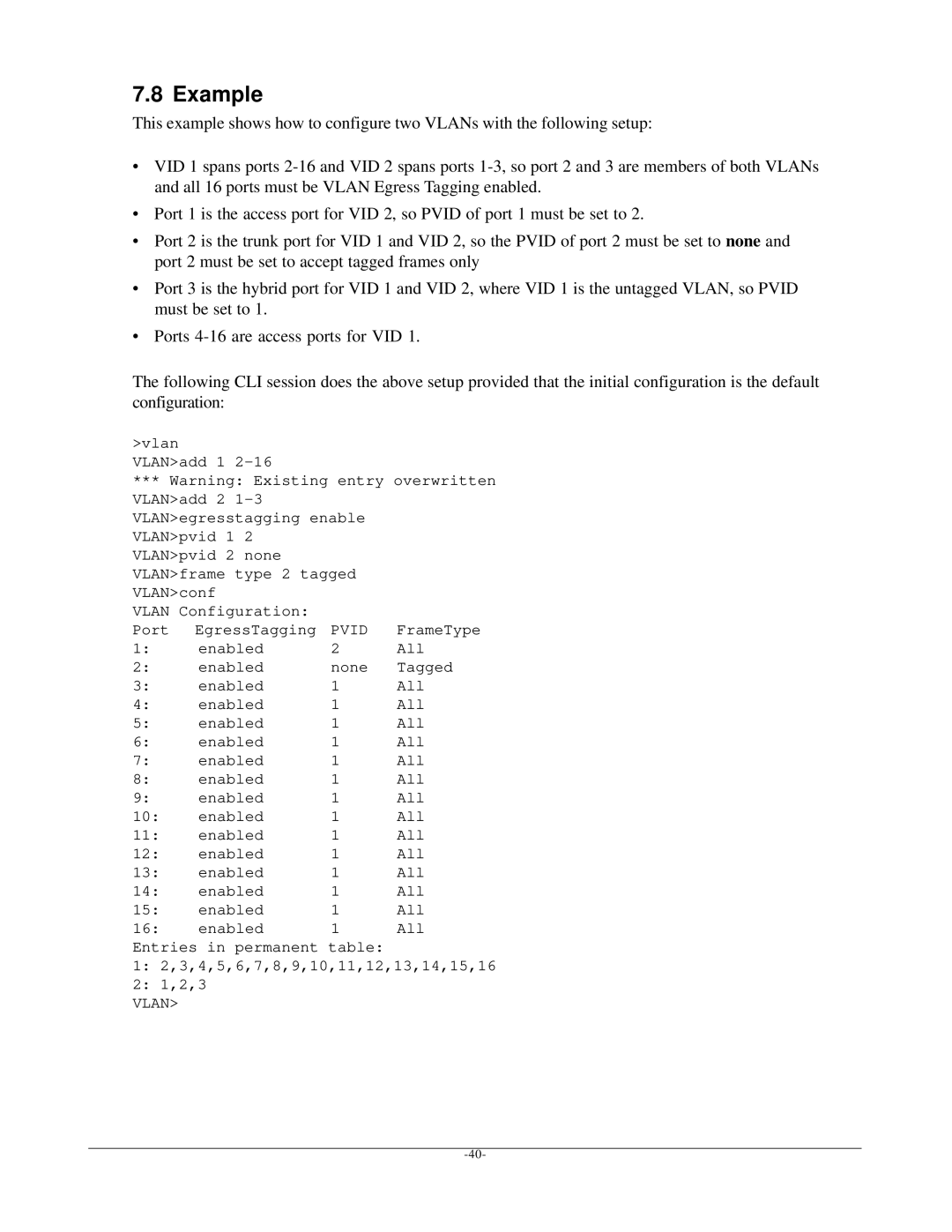7.8 Example
This example shows how to configure two VLANs with the following setup:
•VID 1 spans ports
•Port 1 is the access port for VID 2, so PVID of port 1 must be set to 2.
•Port 2 is the trunk port for VID 1 and VID 2, so the PVID of port 2 must be set to none and port 2 must be set to accept tagged frames only
•Port 3 is the hybrid port for VID 1 and VID 2, where VID 1 is the untagged VLAN, so PVID must be set to 1.
•Ports
The following CLI session does the above setup provided that the initial configuration is the default configuration:
>vlan
VLAN>add 1
***Warning: Existing entry overwritten VLAN>add 2
VLAN>egresstagging enable VLAN>pvid 1 2 VLAN>pvid 2 none VLAN>frame type 2 tagged VLAN>conf
VLAN Configuration:
Port | EgressTagging | PVID | FrameType |
1: | enabled | 2 | All |
2: | enabled | none | Tagged |
3: | enabled | 1 | All |
4: | enabled | 1 | All |
5: | enabled | 1 | All |
6: | enabled | 1 | All |
7: | enabled | 1 | All |
8: | enabled | 1 | All |
9: | enabled | 1 | All |
10: | enabled | 1 | All |
11: | enabled | 1 | All |
12: | enabled | 1 | All |
13: | enabled | 1 | All |
14: | enabled | 1 | All |
15: | enabled | 1 | All |
16: | enabled | 1 | All |
Entries in permanent table:
1:2,3,4,5,6,7,8,9,10,11,12,13,14,15,16
2:1,2,3
